Related Research Articles

Carnival is a Catholic Christian festive season that occurs before the liturgical season of Lent. The main events typically occur during February or early March, during the period historically known as Shrovetide. Carnival typically involves public celebrations, including events such as parades, public street parties and other entertainments, combining some elements of a circus. Elaborate costumes and masks allow people to set aside their everyday individuality and experience a heightened sense of social unity. Participants often indulge in excessive consumption of alcohol, meat, and other foods that will be forgone during upcoming Lent. Traditionally, butter, milk, and other animal products were not consumed "excessively", rather, their stock was fully consumed as to reduce waste. This festival is known for being a time of great indulgence before Lent, with drinking, overeating, and various other activities of indulgence being performed. For example, pancakes, donuts, and other desserts are prepared and eaten for a final time. During Lent, animal products are eaten less, and individuals have the ability to make a Lenten sacrifice, thus giving up a certain object or activity of desire.

Amphitryon, in Greek mythology, was a son of Alcaeus, king of Tiryns in Argolis. His mother was named either Astydameia, the daughter of Pelops and Hippodamia, or Laonome, daughter of Guneus, or else Hipponome, daughter of Menoeceus. Amphitryon was the brother of Anaxo, and Perimede, wife of Licymnius. He was a husband of Alcmene, Electryon's daughter, and stepfather of the Greek hero Heracles.

"The Masque of the Red Death" is a short story by American writer Edgar Allan Poe, first published in 1842. The story follows Prince Prospero's attempts to avoid a dangerous plague, known as the Red Death, by hiding in his abbey. He, along with many other wealthy nobles, hosts a masquerade ball in seven rooms of the abbey, each decorated with a different color. In the midst of their revelry, a mysterious figure disguised as a Red Death victim enters and makes his way through each of the rooms. Prospero dies after confronting this stranger, whose "costume" proves to contain nothing tangible inside it; the guests also die in turn.

Pedro Calderón de la Barca y Barreda González de Henao Ruiz de Blasco y Riaño was a Spanish dramatist, poet, writer and knight of the Order of Santiago. He is known as one of the most distinguished Baroque writers of the Spanish Golden Age, especially for his plays.
This article presents lists of the literary events and publications in 1664.
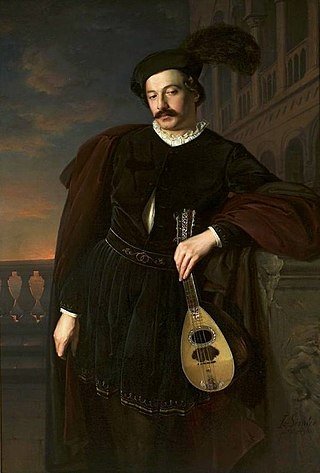
Don Juan, also known as Don Giovanni (Italian), is a legendary, fictional Spanish libertine who devotes his life to seducing women. Famous versions of the story include a 17th-century play, El burlador de Sevilla y convidado de piedra by Tirso de Molina, a 1787 opera, Don Giovanni, with music by Mozart and a libretto by Lorenzo da Ponte, and a satirical, epic poem, Don Juan, by Lord Byron.
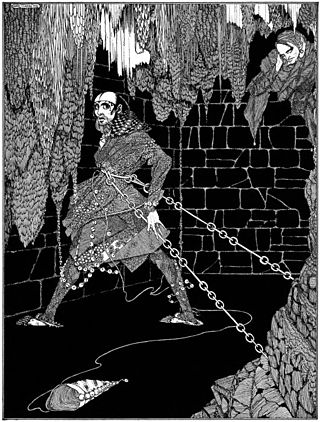
"The Cask of Amontillado" is a short story by American writer Edgar Allan Poe, first published in the November 1846 issue of Godey's Lady's Book. The story, set in an unnamed Italian city at carnival time in an unspecified year, is about a man taking fatal revenge on a friend who, he believes, has insulted him. Like several of Poe's stories, and in keeping with the 19th-century fascination with the subject, the narrative revolves around a person being buried alive – in this case, by immurement. As in "The Black Cat" and "The Tell-Tale Heart", Poe conveys the story from the murderer's perspective.
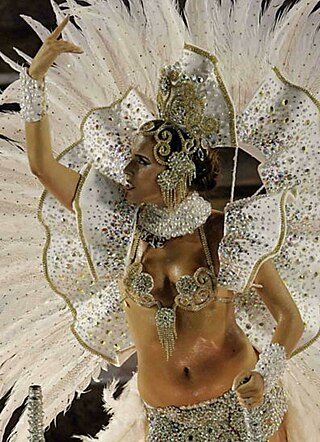
The Carnival of Brazil is an annual Brazilian festival held the Friday afternoon before Ash Wednesday at noon, which marks the beginning of Lent, the forty-day period before Easter. During Lent, Roman Catholics and some other Christians traditionally abstained from the consumption of meat and poultry, hence the term "carnival", from carnelevare, "to remove meat."

Torralba de Calatrava is a municipality located in province of Ciudad Real, Castile-La Mancha, Spain. It has a population of 2959 (2021) and located 17 km (11 mi) from the capital city. Some of the municipalities located close by are Carrión de Calatrava, Daimiel, Malagón and Bolaños de Calatrava.
Francisco José Debali, born Debály Ferenc József, was a Hungarian-born composer who emigrated to Uruguay in 1838. He authored the national anthem of Uruguay and, possibly, the tune to Paraguayos, República o Muerte, which became the Paraguayan anthem.

Olga Zubarry was a classic Argentine actress who appeared in film between 1943 and 1997. She made over 60 appearances in film, spanning 6 decades of Argentine cinema, but is best known for her work during the Golden Age of Argentine Cinema. Throughout the course of her career, she received four Silver Condor Awards, two Martín Fierro Awards, a Konex Foundation Award and several others for her films and television performances. She is credited with starring in the first film in Argentina which featured nudity, though only her back was shown and she stated repeatedly that she wore a flesh-colored mesh and was not truly nude.

Eva María Hernández Villegas, better known as Eva Hache, is a Spanish comedian, actress and television show hostess. Among other performances, she is known for her late night show Noche hache, and for hosting two successive Goya Awards ceremonies.
Thomaso, or the Wanderer is mid-seventeenth-century stage play, a two-part comedy written by Thomas Killigrew, The work was composed in Madrid, c. 1654. Thomaso is based on Killigrew's personal experiences as a Royalist exile during the era of the Commonwealth, when he was abroad continuously from 1647 to 1660.
Francisco Avellaneda was a playwright of the Spanish Golden Age.
Thomas Porter was an English dramatist and duellist.
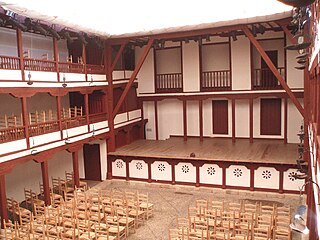
Corral de comedias, literally a "theatrical courtyard", is a type of open-air theatre specific to Spain. In Spanish all secular plays were called comedias, which embraced three genres: tragedy, drama, and comedy itself. During the Spanish Golden Age, corrals became popular sites for theatrical presentations in the early 16th century when the theatre took on a special importance in the country. The performance was held in the afternoon and lasted two to three hours, there being no intermission, and few breaks. The entertainment was continuous, including complete shows with parts sung and danced. All spectators were placed according to their sex and social status.

El Chavo Animado is a Mexican animated series based on the live action television series El Chavo del Ocho, created by Roberto Gómez Bolaños, produced by Televisa and Ánima Estudios. It aired on Canal 5, and repeats were also shown on Las Estrellas and Cartoon Network Latin America. 134 episodes aired between 2006 and 2014 and starts a hiatus.
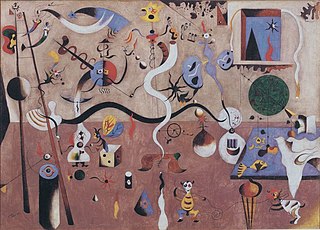
The Harlequin's Carnival is an oil painting painted by Joan Miró between 1924 and 1925. It is one of the most outstanding surrealist paintings of the artist, and it is preserved in the Albright–Knox Art Gallery in Buffalo, New York.
References
- ↑ Susan Paun De García, Donald R. Larson The Comedia in English: Translation and Performance - 2008 -1855661691 Page 10 "A play that is sometimes said to be an adaptation of a Spanish original is Thomas Porter's The Carnival, which was probably premiered in the spring of 1664, and thereafter achieved some popularity. As Loftis has shown (Plays, 83-7), the plot of the work does indeed resemble that of a standard comedia de capa y espada, but no specific source has as yet been identified.